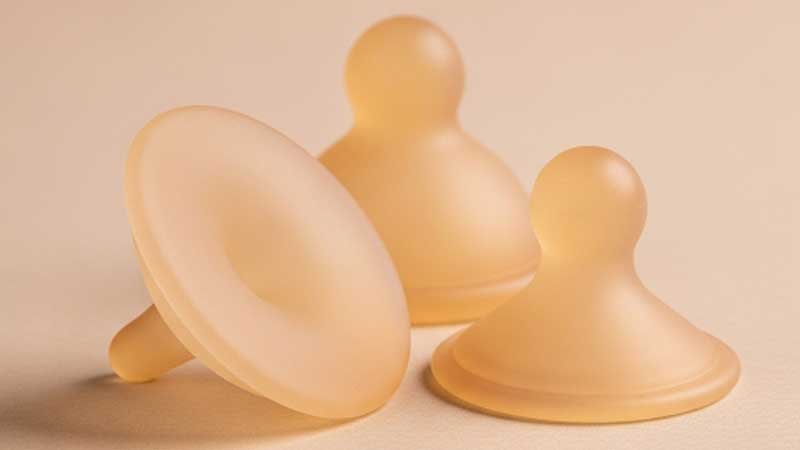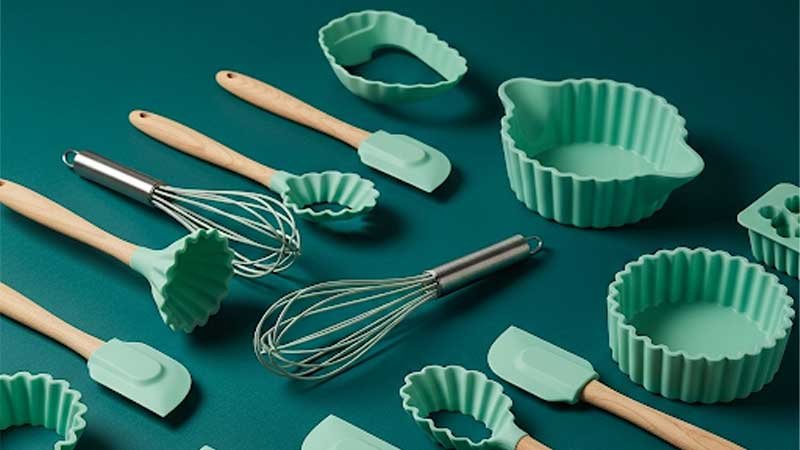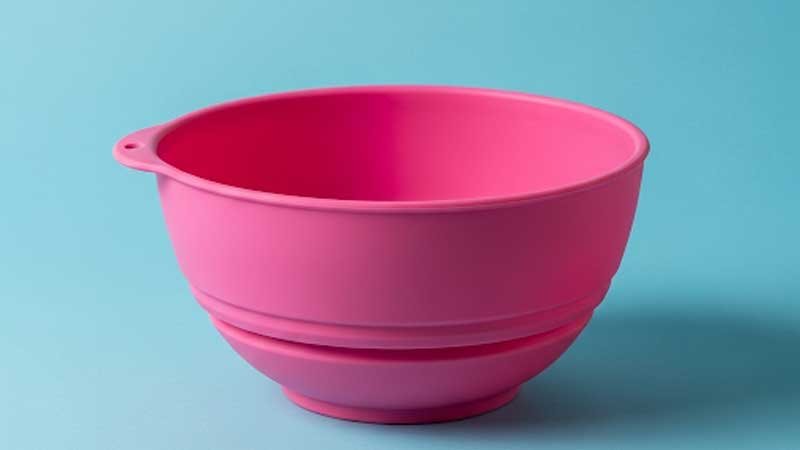Many people trust silicone for its strength—but how long does silicone really last?
Whether you’re using it for cooking, sealing, or healthcare, you need something you can rely on. No one wants to deal with cracking, melting, or losing performance unexpectedly.
Silicone is famous for durability, but not all silicone products perform the same way. Heat, chemicals, sunlight, and stress can all shorten its lifespan.
This article breaks down everything you need to know about silicone’s durability—from what affects it to how to extend it.

What’s the Expected Lifespan of Silicone?
To better understand the lifespan of silicone in different situations, we can divide its applications into several main categories.
Daily-Use Products
These include items like phone cases, kitchen tools, and baby goods.
In everyday use, silicone often comes into contact with skin oils, sweat, food residues, and frequent cleaning. As a result, its appearance and texture tend to age before the material itself fails. Yellowing, stickiness, discoloration, and surface wear are common.
People often replace these products after 3 to 5 years. However, the reason for replacement is usually not structural failure. It is more about changes in look or feel.
Industrial and Automotive Components
Silicone is also used in seals, gaskets, and dampers.
These parts face tougher conditions, such as high heat, oil, vibration, and chemical exposure. Thanks to special formulations and precise manufacturing, these products are built to last.
Their service life often ranges from 5 to 15 years, sometimes longer. This matches the lifespan of the machines or vehicles they support.
Outdoor and Construction Applications
Examples include curtain wall sealants and solar panel edge seals.
These materials must resist UV rays, harsh temperatures, wind, and rain over long periods.
High-quality outdoor-grade silicone can last 10 to 20 years or more. It plays a key role in keeping buildings and structures durable.
Medical Implants and Specialized Uses
Some silicone products are implanted in the human body. Others are used in environments with strong chemicals for long periods.
These applications demand high purity, strong stability, and excellent biocompatibility. They often use medical-grade or custom silicone.
Their lifespan can stretch over decades. However, even the smallest change in performance may be considered a sign of end-of-life in these critical uses.

Why Is Silicone So Durable?
Silicone stands out for its exceptional durability. This comes mainly from its unique and stable molecular structure. Silicone has a backbone made of strong silicon-oxygen bonds. These bonds are much stronger than typical carbon–carbon bonds. Because of this, silicone has excellent heat resistance. It can stay stable between -50°C and 200°C or even higher without breaking down.
Silicone is also highly chemically inert. It does not react easily with water, mild acids or bases, salt solutions, or many types of oils. Even in wet or corrosive environments, it holds up well and does not degrade over time. Besides, silicone resists UV rays, ozone, rain, and snow. So even if it stays outdoors for a long time, it won’t crack, discolor, or turn brittle.
Another key advantage is its ability to maintain flexibility. After long-term pressure or repeated bending, it still bounces back. Its low compression set means it keeps its shape and continues to seal or cushion as needed. All of these traits explain why silicone products last so long.

What Factors Affect Silicone Durability?
Silicone is highly durable. However, it can still face damage in harsh environments. The main causes of silicone degradation and aging include the following.
Thermal Degradation
- High-Temperature Aging: In extreme heat, silicone chains may break or cross-link too much. This makes the material hard, less elastic, and may cause cracks.
- Low-Temperature Embrittlement: In very cold conditions, silicone becomes less flexible and more brittle. It may break when stressed.
- Thermal Cycling Effect: Repeated heating and cooling cause expansion and contraction. This leads to internal stress, faster fatigue, and damage over time.
Chemical Degradation
- Oxidation and Ozone Exposure: Long exposure to high oxygen or ozone levels can slowly oxidize the surface. This may cause yellowing or sticky texture.
- Acid and Alkali Contact: Strong acids or alkalis can damage the silicone structure if exposure lasts too long. This reduces performance.
- Solvent Contact: Silicone is weak against some non-polar solvents like gasoline, benzene, or chlorinated hydrocarbons. Long contact may cause swelling, deformation, and loss of function.
- Contaminants: Oils, greases, or chemicals left on the surface for a long time may speed up aging.
Physical Stress
- Ultraviolet (UV) Radiation: UV rays can break molecular chains. This leads to yellowing, surface chalking, or cracking.
- Mechanical Stress: Repeated stretching, bending, compression, or friction can cause fatigue. Over time, this reduces strength and flexibility, leading to cracks.
- Hydrolysis: In hot and humid conditions or underwater, some chemical groups in silicone may react with water. This weakens the material.
Other Potential Factors
- Manufacturing Defects: Problems like under- or over-vulcanization, impure materials, or poor mixing can reduce product lifespan.
- Additive Depletion: Additives such as antioxidants and UV stabilizers help improve performance. But over time, they may wear out or lose effect, causing the material to age.
- Improper Cleaning and Maintenance: Using harsh cleaners or storing the product poorly can make silicone age faster.

How Can You Extend the Lifespan of Silicone Products?
To ensure silicone products perform reliably over time, manufacturers and users should adopt some strategies.
Material Selection and Formulation Optimization
- Choose the right silicone grade: Use general-purpose, high-strength, food-grade or medical-grade based on the product’s use and environment.
- Customized formulation: Add functional additives such as antioxidants, UV absorbers, flame retardants, or wear-resistant agents when needed.
Product Design Considerations
- Reduce stress concentration: Improve shape design to lower the chance of fatigue cracks.
- Surface treatment: Use plasma treatment or coatings to enhance wear and chemical resistance.
Proper Use and Maintenance
- Avoid extreme environments: Limit long exposure to high heat or strong UV light.
- Regular cleaning and inspection: Clean the surface often to remove oil, dust, or other dirt. Check for early signs of wear, discoloration, or cracks.

How Can We Evaluate and Predict the Durability of Silicone Products?
Assessing the lifespan of silicone products is important. This ensures their performance, reliability, and safety, especially in fields like medical, aerospace, industrial, and consumer applications. Scientific lifespan evaluation uses a mix of lab testing, theoretical modeling, and real-time monitoring. Below are the main methods.
Accelerated Aging Tests:
This is the most common method. It simulates extreme conditions like high heat, humidity, strong UV, or chemical exposure to speed up the aging process. This helps estimate long-term performance in a short time. For example, silicone samples may be baked at 200°C continuously, and then tested for changes in physical properties.
Real-Time Aging Tests:
In this method, products are placed in actual use environments and monitored over time. The data is highly accurate, but the process takes longer and costs more. It’s often used for critical products.
Failure Analysis:
When a silicone product fails, experts use visual inspection, microscopy, and chemical analysis to find the root cause and understand the degradation process.
Lifespan Prediction Models:
Based on accelerated aging data, scientists use models like the Arrhenius equation to predict how long the product will last under normal conditions.
Conclusion
Silicone is one of the most durable and reliable materials available today. But just like any material, its lifespan depends on how it’s made, used, and maintained. Silicone can last a very long time, but only under the right conditions. Knowing what affects its performance helps you make better choices.
Ready to create something better with silicone? We’re here to help. With top-grade materials and expert production, we deliver silicone products that perform and last.